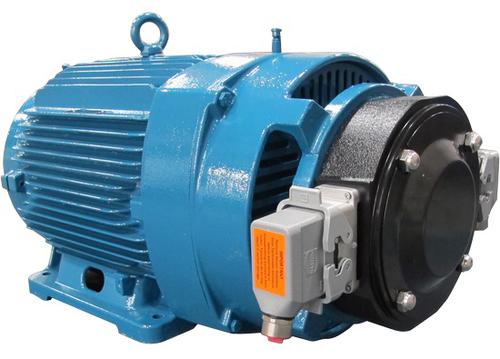The Growing Need to Solve Light-Load Motor Efficiency
May 13, 2015

As manufacturing companies become more mindful of the amount of energy they use in order to cut energy bills, become compliant with corporate energy targets, or meet government regulations, they have turned their attention to the motors they operate. Today, motors consume about 70% of all energy used in industry worldwide, and about 60% of these motors run at fixed speed. They have no scope for speed reduction despite the fact that even small improvements in motor efficiency thanks to evolving technology can make huge differences in cost and energy savings.
Soft starters are a means of motor energy savings by mitigating the inrush of current that many motors require at their start-up phase. Soft-start technology also saves on equipment wear and tear. Other solutions include variable frequency drives (VFDs), which can reduce energy usage as long as the motor is able to be slowed. Unfortunately, if a motor needs to run at fixed full speed, VFDs can actually be more costly to run in terms of energy use.

A reduction in energy usage can be gained by solving the problem of inefficiencies in motors running at lighter loads, where losses are often the greatest. A motor working at 100% load has a number of losses that will affect its overall efficiency -- losses due to heat generation in the windings, friction and turbulence, and losses in the iron core. As a result, to power a 90-kW load, the motor has to take 99 kW from the energy supply. This makes the overall efficiency of the system 91%.
MORE FROM DESIGN NEWS: Soft Starters Spare Wear & Tear on Motors, Help Control Peak Energy Usage
As the motor becomes more lightly loaded, however, the power factor reduces and the efficiency of the motor plummets, largely because the iron losses, or the dissipation of magnetic energy when the magnetic field is applied to the stator core, remain the same at both full load or light load even though heat, friction, and turbulence losses are reduced in lighter loads. As a result, when the load reduces, the losses become more significant, and efficiency can drop below 80%.
Steven Atkey, an international technical specialist for UK-based Fairford Electronics, told Design News there is a strong need today to reduce the energy consumption of AC induction motors and address energy usage at lower loads. He said this can be accomplished by monitoring the motor's running power factor and reducing the motor's voltage and current automatically, which reduces the wattage consumed by the motor. This reduces losses from heat and friction, as well as iron losses.
Energy savings on AC motors is a very hot topic at the moment due to the legislation changes in Europe, and these changes will soon be brought to the US. There are several ways to save energy on AC motors depending on what job they are trying to achieve," he told us.
Atkey said Fairford has come up with an "intelligent energy recover system," or iERS. The system was designed to save energy on fixed-speed motors that run at light loads, particularly compressors (air and refrigeration), HVAC, lightly loaded pumps and fans, escalators, elevators, injection molding machines, grinders, and conveyors. According to Atkey, the technology allows equipment designers to reduce the energy consumption of their machines without altering the output, which is a bonus both for energy savings and automation.
Tracey Schelmetic graduated from Fairfield University in Fairfield, Conn. and began her long career as a technology and science writer and editor at Appleton & Lange, the now-defunct medical publishing arm of Simon & Schuster. Later, as the editorial director of telecom trade journal Customer Interaction Solutions (today Customer magazine) she became a well-recognized voice in the contact center industry. Today, she is a freelance writer specializing in manufacturing and technology, telecommunications, and enterprise software.
Atlantic Design & Manufacturing, the largest advanced design and manufacturing trade show serving the Northeastern US, delivers thousands of senior level design and manufacturing professionals who are looking for new ideas, innovations, and solutions. A Design News event, Atlantic Design & Manufacturing will take place in New York, June 9-11, 2015. It’s your chance to meet qualified suppliers, get hands-on with the latest technologies, and expand your network. Learn more here.
About the Author(s)
You May Also Like





